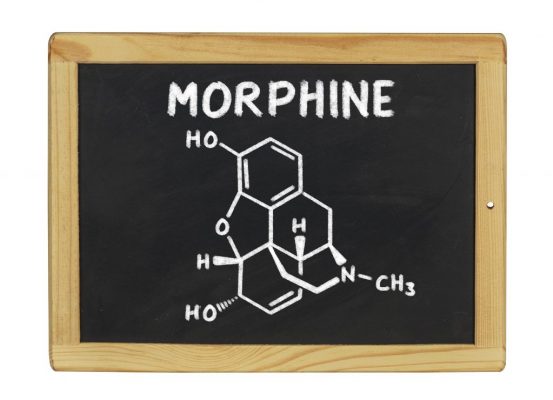When it comes to conquering the grip of morphine addiction, the key lies in finding a treatment approach that addresses the unique needs of each individual. At the forefront of this endeavor stands the Waismann Method, a pioneering leader in the field of rapid morphine detox. Morphine dependency is a complex issue that demands a comprehensive evaluation of a patient’s health history and current physical conditions. Only through this thorough understanding of the individual can a truly effective and customized treatment program and medical detox be crafted, one that not only assists in becoming opioid-free but also focuses on the deeper issues that often underlie morphine use.
How to Find the Best Treatment for Morphine Addiction?
Morphine Detox
An effective detox from morphine requires that the treatment center customizes the program to each patient’s health needs. Therefore, a comprehensive evaluation allows medical professionals to obtain information about the patient’s health history and present physical conditions. It also provides a more in-depth understanding of the individual, which significantly helps the treatment team develop an effective and customized treatment program.
Medically Assisted Detox
Opiate drugs may affect the user’s blood pressure, heart rate, and digestive system. Metabolic dysfunctions and chemical imbalances are also common physical symptoms of prolonged morphine use. It is crucial for patients’ safety that during an opioid detox, medical doctors help stabilize and regulate the patient’s metabolism.
Morphine withdrawal is often best managed in a medical facility with the aid of doctors and mental health professionals. The main goal of detox is to assist individuals to safely become opioid-free, physically stable, and emotionally present to follow up with a treatment that focuses on the deeper issues that often led to morphine use.
Rapid Morphine Detox
Morphine Rapid Detox includes supportive medical care in a full-service accredited hospital where patients receive sedation and specific medications to address symptoms and prevent health complications. Although the process is highly safe and effective, not all rapid detox centers are the same. The experience of the treating physician, length, quality, and amount of care differs from one treatment center to the other.
The Benefits of Morphine Rapid Detox
Rapid detox off morphine helps the metabolic regulation happen much faster. Because doctors can precipitate and speed the morphine detoxification period, the next phase of regulation naturally occurs. Furthermore, after a morphine rapid detox is successfully implemented, the patient can immediately start the Vivitrol or Naltrexone therapy, significantly reducing physiological cravings and preventing relapse.
What is Morphine?
Morphine is an opiate drug prescribed to manage severe pain. Morphine is named after the Greek god of dreams, Morpheus, because of its dreamlike effects. It is a powerful narcotic opioid derived from the opium poppy plant. It is also one of the most potent painkillers in existence.
Morphine is available in the following forms:
- liquid
- oral tablet/capsule
- suppository
- injectable
Morphine’s pharmaceutical brand names include:
- MS-Contin
- Kadian
- MSiR
- Oramorph SR
- Roxanol
- RMS
The Drug Enforcement Administration (DEA) classifies morphine as a Schedule II controlled substance. A schedule II drug indicates the high potential for abuse, diversion, and addiction.
Because of the euphoric effects of this drug, morphine is also sold illegally by a variety of names, including:
- More
- Unkie
- Dreamer
- Morpho
- Blue
- First Line
- Tango
- Cash
- Monkey
- TNT
- Murder 8
- Goodfella
- White Stuff
- God’s Drug
- Auntie Em
- Emma
- Mister Blue
Drug Overdose Deaths Continue to rising
The Centers for Disease Control and Prevention (CDC) latest reports show that drug overdose deaths in the USA soared nearly 30% from 2019 to 2020. An estimated 93,331 deaths from drug overdose are a record high and the sharpest annual increase in the last 30 years.
Tolerance to morphine can develop rapidly, and for that reason, the drug has a great potential of becoming addictive. The drug is a Schedule II medication because of its medical use for moderate, severe, and chronic pain. However, morphine has a high potential for abuse because of its pleasurable effects. In recent years, pharmaceutical companies have tried changing the formulation of this drug to prevent people from crushing, snorting, or injecting. However, these preventative efforts have not affected the illicit market.
Are you ready to put morphine addiction behind you? Call us today!
See how our medically assisted detoxification program combines clinical excellence and a professional, caring environment, so you feel safe and welcome every moment of your stay.1-800-423-2482
How Does Morphine Work?
Morphine directly affects the central nervous system (CNS), which affects the response of pain sensations, slows the heart rate, respiration and lowers blood pressure. These physical changes provide people with a sense of tranquility and pleasure. As a result, even those who have been prescribed morphine for medical use can become physically dependent.
Physical Dependence
Morphine physical dependence causes a tremendous dysregulation of your nervous system. Withdrawal symptoms develop after the body has become accustomed to the constant presence of the drug. Once the intake is disrupted or discontinued, people will likely feel extreme anxiety, nausea, vomiting, or body pain. These withdrawal symptoms and many others keep people on the revolving cycle of addiction.
Fortunately, there are compelling medical solutions, and one of them is rapid morphine detox.
To find the best treatment for morphine addiction, you first need to learn about the drug’s mental and physical effects.
What is the Difference between Dependence and Addiction?
Although many people confuse dependence and addiction, the conditions are not the same. Physical dependence happens when the brain and body become used to a specific dosage, requiring more and more drugs to achieve its original effects. Addiction is when a compulsive behavior to acquire and use drugs is present, regardless of the risks and adverse consequences.
It is important to remember that not everyone who develops a physical dependence on a drug will also become addicted to it. When someone uses morphine as prescribed for a legitimate medical condition, they might develop a dependence but not the addictive behavior. On the other hand, when people use the drug recreationally, the risk of becoming addicted dramatically increases. Additionally, the method in which a drug is used can also lead to different consequences. For example, when someone injects, snorts, or smokes morphine, the drug rapidly crosses the barrier between the brain and blood, bypasses any extended-release features, and sends the whole dosage into the bloodstream at once. Not only does this increase the risk for a potentially fatal overdose, but it also increases the chance of developing dependence and addiction.
“Our citizens’ tragic and continuous rising death toll clearly shows the immediate and urgent need for comprehensive measures to address the opioid crisis, including public safety, mental health assistance, and medically assisted drug treatment.” – Clare Waismann, M-RAS / SUDCC II – Waismann Method® Founder
Recognizing the Signs of Morphine Addiction
Signs of morphine dependence and addiction can be physical and psychological and usually lead to significant changes in someone’s behavior that can become apparent to loved ones. Ultimately, recognizing the signs of morphine dependence or addiction can help people get the help they so desperately need.
Common Symptoms of Morphine Abuse:
- constipation
- fatigue
- drowsiness
- involuntary muscle twitching
- decrease in appetite
- disinterest in activities once joyful
- secrecy
- persistent concern with new prescriptions
- the constant need for additional medication
Underlying mental health issues, such as anxiety and depression, are also significant issues related to substance abuse. While some people may develop depression, others may have a pre-existing condition that contributed to their addiction.
Conclusion
In a world where drug overdose deaths are surging to alarming levels, the need for effective solutions to morphine addiction has never been more pressing. Morphine, a potent opiate, can rapidly lead to physical dependence, making the journey to recovery an uphill battle. However, hope shines through in the form of rapid morphine detox, an approach that accelerates the process of breaking free from the clutches of morphine. With a commitment to individualized care, medically assisted detox, and a dedication to addressing both the physical and psychological aspects of addiction, the Waismann Method emerges as a beacon of hope. If you or a loved one is grappling with morphine addiction, remember that there is a path to recovery, and it begins with understanding the signs, seeking help, and embracing the possibility of a brighter, drug-free future.
Sources:
Reviewed by Clare Waismann, Registered Addiction Specialist (M-RAS), Substance Use Disorder Certified Counselor (SUDCC II), founder of Waismann Method® Advanced Treatment for Opiate Dependence and Domus Retreat®. Clare Waismann is an authority and expert on opioid dependence, opioid use disorder, substance dependence, detoxification treatments, detox recovery, and other topics covered on RapidDetox.com.









